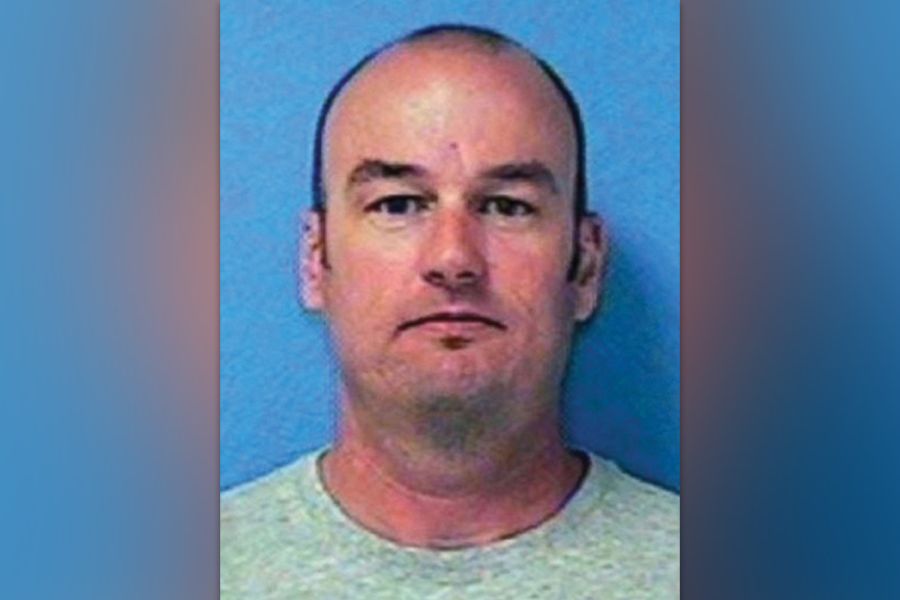
In Maryland, a self-described white nationalist Coast Guard lieutenant pleaded guilty to four federal weapons and drugs charges, after investigators uncovered his plot to kill high-profile liberal figures, including Democratic lawmakers, media personalities and judges. Fifty-year-old Christopher Hasson was arrested with a stockpile of 15 guns and more than 1,000 rounds of ammunition, after he used his work computer at the Coast Guard to read the manifestos of mass killers and to research sniper attacks.
Hasson worked as an acquisitions officer and was arrested at Coast Guard headquarters in Washington in February. Investigators said they found 15 firearms, two homemade silencers and more 1,000 rounds of ammunition in his Maryland home, as well as at least 100 pills of the painkiller Tramadol and more than 30 bottles of purported human growth hormone. Two of the four counts in Hasson’s indictment charged him with illegally possessing unregistered and unserialized silencers. He also was charged with possession of a firearm by an unlawful user or addict of a controlled substance, and illegal possession of tramadol, an opioid painkiller.
Inspired by the manifesto of Norwegian mass murderer Anders Breivik, Hasson spent hours researching the tactics of domestic terrorists, prosecutors said. “I am dreaming of a way to kill almost every last person on earth,” he wrote on his computer, saying he would “have to take serious look at appropriate individual targets, to bring the greatest impact.” Among the targets on a list found on Hasson’s computer were Speaker of the House Nancy Pelosi, MSNBC anchor Chris Hayes and Democratic Senator Kamala Harris. Hasson also targeted two Supreme Court justices and two social media company executives and searched online for their home addresses in March 2018, within minutes of searching firearm sales websites, according to prosecutors. Prosecutors wrote that the former Marine considered them “traitors.”
In a 2017 letter he sent to himself as a draft and apparently wrote to a neo-Nazi leader, Hasson identified himself as a white nationalist for over 30 years and “advocated for ‘focused violence’ in order to establish a white homeland,” prosecutors said. He researched how to make homemade bombs and mortars, studied sniper training and used his government computer to search for information about Nazis and Adolf Hitler, prosecutors said.
Federal prosecutors did not file terrorism charges against Hasson. Assistant U.S. Attorney Thomas Windom indicated the government may seek the maximum sentence of up to 31 years in prison at the sentencing hearing scheduled for January 31, 2020. Hasson’s attorney, Elizabeth Oyer, said she intends to seek a 3.5-year sentence for her client. Oyer said Hasson “was not plotting a terrorist attack or any of the abhorrent acts that the prosecution has repeatedly speculated about but never actually charged. Mr. Hasson never meant any harm to anyone. He deeply regrets the pain and embarrassment that he has caused his family and the U.S. Coast Guard”. Oyer has said prosecutors found no evidence to back up terrorism allegations. She accused them of seeking to punish Hasson for “private thoughts” he never shared.
Read more

MGM Resorts International has agreed to an $800 million settlement with more than 4,000 survivors of the 2017 massacre outside the Mandalay Bay casino. The settlement was announced after survivors joined friends and families of those killed at a commemoration ceremony marking the second anniversary of the massacre. An independent claims administrator will be appointed by a court to distribute money from a settlement fund. The payout process is expected to be completed by late 2020, lawyers said.
It was October 1, 2017, when a lone gunman named Stephen Paddock used semiautomatic rifles altered with bump stocks to open fire from the resort’s 32nd floor on a country music festival below, killing 58 people and wounding 851 others. Paddock, a reclusive 64-year-old gambler, sprayed bullets on a crowd of 22,000 concertgoers from the 32nd floor of the Mandalay Bay Resort and Casino, which is owned and operated by MGM Resorts. He fired for between 10 to 15 minutes at the country music festival.
It remains the worst mass shooting in modern U.S. history. Lawyers representing survivors and victims’ wanted MGM held liable for negligence because the shooter was able to enter the hotel with luggage that held an arsenal of high-powered, assault-style weapons and thousands of rounds of ammunition. Paddock was found dead in his hotel room from a self-inflicted gunshot wound. Federal investigators have still not been able to identify a motive for the shooting.
Police found 23 guns inside his hotel suite and discovered that he had brought more than 10 suitcases to the room over several days, authorities said. Lawsuits filed since the shooting questioned how and why the hotel did not know he was hoarding high-powered weapons and ammunition in his hotel room in the days leading up to the attack. Attorney Jim Frantz, who represents nearly 200 survivors and the families of four victims, said the settlement “should be a message to all the other corporations and businesses around the country-that they need to step up their security.”
MGM Resorts International and attorneys for about 4,440 plaintiffs, said the final amount of money awarded will depend on the number of plaintiffs who choose to take part in the settlement. “While nothing will be able to bring back the lives lost or the undo the horrors so many suffered on this day, this settlement will provide fair compensation for thousands of victims and their families,” Robert Eglet, one of the lead lawyers for the plaintiffs, told reporters. Eglet called the settlement a “milestone in the recovery process for the victims of the horrifying events” of Oct. 1, 2017. Eglet and lawyers from two California firms represent about 2,500 plaintiffs.
In July 2018, MGM spurred outrage when it aggressively tried to avoid liability by filing federal lawsuits against more than 1,000 victims in a legal maneuver aimed at avoiding liability. In its civil actions, MGM claimed it did not have to pay damages to shooting victims because the company was protected by 2002 legislation, the Support Anti-Terrorism by Fostering Effective Technologies, or Safety Act. It protects corporations in the event of mass attacks committed on U.S. soil, provided services certified by the Department of Homeland Security were deployed. The company cited a federal law passed after the Sept. 11, 2001, attacks that encouraged companies to deploy anti-terrorism security technology without fear of being held responsible for damages in the event of a terrorist attack.
MGM Resorts Chairman and CEO Jim Murren now says that “prolonged litigation around these matters is in no one’s best interest. It is our sincere hope that this agreement means that scenario will be avoided.” The deal is not an admission of any wrongdoing by MGM, Murren said in the statement
Read more

General Motors has told the UAW that it will continue to pay for health coverage for striking workers. GM told the union after it went on strike Sept. 16 at company sites nationwide that it was kicking health care costs to the union, a move that UAW leaders said blindsided them, even though they had anticipated picking up those costs at some point through the strike fund. GM stated they have chosen to work with their providers to keep all benefits fully in place for striking hourly employees, so they have no disruption to their medical care, including vision, prescription and dental coverage.
The strike is the UAW’s first since the Great Recession and GM’s federally induced bankruptcy in 2009. Experts say as the strike continues toward the end of its second week, it has left a lasting economic impact. Strike pay is $250 per week, but it won’t be distributed until the 15th day of picketing. The starting wage for temporary production workers at GM is $15.78 per hour, which is about $630 per 40-hour week. Top-paid production employees, however, earn $30.46 per hour, or about $1,218 per week.
The UAW says that temporary workers are union members doing the same work as permanent employees, but they get half the pay and far fewer benefits. The union wants those workers to get a path to being permanent and get pay and benefits that more closely match their permanent counterparts, even when they’re temporary. GM counters that employing temporary workers is good for permanent employees because they enable the full-time staff to take time off. Hiring temps also gives the company flexibility to scale up production for new models and combat employee absenteeism
The UAW is also fighting for the retention of a health insurance plan in which workers pay about 4% of the costs, an improved pension and assurances that GM — the maker of Buick, Cadillac, GMC and Chevrolet — will not close four plants in Maryland, Ohio and Michigan.
The strike has affected GM facilities in Ohio and Ontario not represented by the UAW. All told more than 3,200 GM workers represented by other unions have been laid off. On Monday, the automaker notified 525 employees at its DMax Ltd. engine plant in Moraine, Ohio, that they temporarily were laid off. GM suppliers, such as Magna International Inc. and Nexteer Automotive, also said they temporarily have had to lay off employees during the strike.
Analysts agree that the cost of the strike is mounting daily for both GM and striking workers, as well as for the broader community. Anderson Economic Group, an East Lansing-based consultant, said in a new analysis Thursday that GM probably has lost profits of $113 million so far, and is now losing money at the rate of $25 million a day. As talks continue toward a UAW-GM contract, negotiations have entered a new stage and moved to the main table. In recent days, talks have been confined to smaller committees as the two sides struggled to hammer out details.
Union leaders have argued that GM workers deserved a bigger slice of the company’s profits, which they say have totaled $35 billion in North America over the last three years. Union members are calling for fair wages, saying for every $1 a GM employee made, CEO Mary Barra made $281. As the strike enters its 3rd week, the national impact will continue until an agreement is reached.
Read more
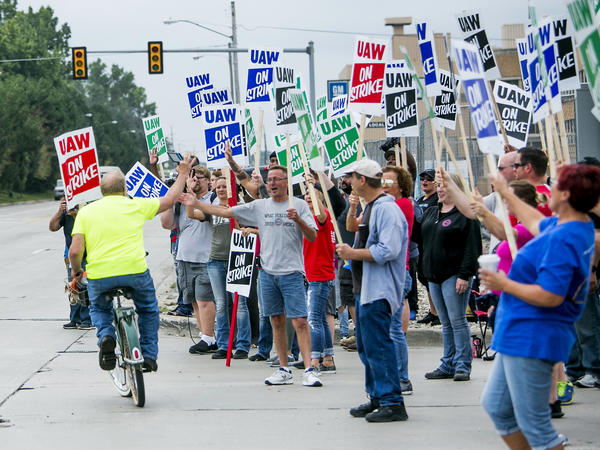
On September 15th, nearly 50,000 members of the United Auto Workers (UAW) launched a strike, walking out of over 50 General Motors facilities. Workers say GM continues to deny employees’ demands for fair conditions and compensation despite leading the company to record profits following bankruptcy and a federal bailout. The nearly 50,000 full-time and temporary workers represented by the UAW make up about half of its workforce.GM workers say they are pushing for a more equitable contract that will guarantee better wages for new hires, stronger health-care benefits and more job security. Workers are forgoing their paychecks during the strike, though the UAW will pay them $250 a week from its strike fund.
GM has made over $30 billion in the past six years, since recovering from its 2009 bankruptcy. Although they received profit-sharing checks that totaled $52,500 for the same period, workers want pay raises that will show up year after year. They gave up cost-of-living pay raises and made other concessions to keep the company afloat during its 2009 bankruptcy, and now they want to be repaid. Longtime workers have received only two raises since 2010. Workers hired after 2007 still make less than older workers, and the union wants to erase that gap.
The company is facing a global auto sales slowdown and also says health care costs are too high, and it wants to cut labor costs so they are closer to U.S. factories owned by foreign competitors. Senior GM workers now make around $30 per hour, but with benefits, it adds up to $63 per hour. Total labor costs run an average of $50 per hour at the foreign plants. The car giant has moved to close a handful of production facilities in the United States in recent years despite strong profitability margins. GM made $8.1 billion in profit after taxes last year but announced the closure of four factories, scuttling thousands of jobs. GM says it has offered to make $7 billion in investments and create 5,400 jobs, including introducing electric trucks, opening a battery cell manufacturing site and investing in eight existing facilities.
The strike has effectively halted GM’s production in the US and just a day after the strike, GM responded with a letter announcing they had cut off health insurance for the nearly 50,000 people on picket lines across the country. GM spokesman David Barnas said the decision to cut workers’ health care was a standard practice during stoppages, likening it to the cessation of worker paychecks. A spokesperson for the UAW stated that they would cover the striker’s health-care fees under COBRA in the interim from the pool of money it keeps for strikes. Employee dental and vision plans will not be covered during the strike.
The effects of the strike have been felt quickly, when GM dismissed 1,200 workers from an assembly plant in Ontario, Canada just three days after the strike started. GM has said the temporary layoffs were the result of parts shortages in the United States because of the strike. The factory had produced full-size pickup trucks. Analysts say GM could be losing as much as $50 million to $100 million a day from the stoppage. 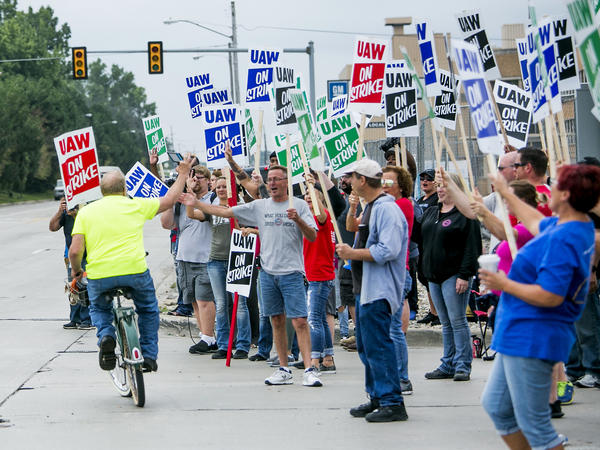
Read more

Newark, New Jersey’s water crisis is growing worse as authorities temporarily halted their distribution of bottled water to families whose tap water is contaminated with lead. The Environmental Protection Agency told city officials to distribute bottled water “as soon as possible,” after it determined that water filters were ineffective at safely filtering lead from the water supply of thousands of homes. State and local officials began offering free bottled water to 15,000 Newark households, and hundreds of people queued in long lines in the summer heat for their allotment. Officials stopped handing out the water after discovering many of the bottles had exceeded their best-by date.
The levels of lead in Newark, New Jersey’s drinking water are some of the highest recently recorded by a large water system in the United States. City and state officials have been violating the Safe Drinking Water Act in several ways, such as failing to treat its water to prevent lead from flaking off from pipes into residents’ drinking water and neglecting to notify people about the elevated levels and the health risks. For years, the city has had the greatest number of lead-poisoned children in New Jersey. This likely stems from a variety of exposures to lead, including from contaminated tap water and other sources.
One way lead particles get into water is through corrosion in pipes and it’s believed to be the cause in Newark. The metal in lead service plumbing lines starts to tear away and mix with the water passing through. This is often apparent in older pipes; in some affected Newark neighborhoods, pipes are over 100 years old. Citywide tests conducted in June 2017 showed that more than 10% of homes across Newark had twice the amount of lead that is considered safe according to federal law.
The Natural Resources Defense Council (NRDC), an environmental and health advocacy group, sent a letter to officials in Newark later that year saying that they had failed to address the lead contamination issue. After the city failed two more citywide lead tests in December 2017 and June 2018, the city announced in October that year that it would provide over 40,000 water filters to residents. After the city then failed a fourth consecutive lead test in December 2018, Newark Mayor Ras Baraka wrote an open letter to the President asking for federal help to fix the water system in the city.
The city failed another lead test in June 2019 and in August, after testing three homes that were using water filters provided by the city, officials found that two of those homes still had elevated levels of lead in them. After the results of their water filter tests, city officials have begun handing out packages of bottled water to Newark residents, in accordance with guidance from the Environmental Protection Agency (EPA).
There is no safe level of lead exposure and pregnant women and children are most at risk. Even low lead levels are associated with serious, irreversible damage to developing brains and nervous systems. Lead exposure is also linked to fertility issues, cardiovascular and kidney problems, cognitive dysfunction, and elevated blood pressure in otherwise healthy adults.
Read more

On the day Nicholas Cruz opened fire at Marjory Stoneman Douglas High School he killed 17 classmates and teachers and wounded 17 others. Many students escaped with their lives but have emotional wounds that they’ll carry with them for the rest of their lives. For Sydney Aiello, 19, the grief of losing her classmates and teachers, including close friend Meadow Pollack, weighed heavily on her. A little over a year after the shooting took place, she took her own life on March 17th. Heather Galvez of the Broward County Medical Examiner’s Office said Aiello died from a gunshot wound to the head. Aiello’s funeral was held Friday and she was buried at Temple Beth El Memorial Gardens in Davie, Fla. She is survived by her parents, Cara and Joseph, and older brother Nick.
Aiello was a senior and on the high-school campus the day of the mass shooting but was not in the freshman building where the shooting occurred. Many said she was never the same after the February 14th shooting claimed the lives of her classmates. After graduating, she enrolled at Florida Atlantic University but her mother, Cara Aiello said she struggled to attend class because she was afraid to be back in a classroom. She said her daughter was consumed with survivor’s guilt and recently diagnosed with post-traumatic stress disorder from the massacre. She said Sydney couldn’t shake the devastating trauma of the mass shooting last year and the death of her longtime friend, Meadow Pollack. She seemed sad in recent days, her mom said, but never asked for help before taking her own life. Cara Aiello said that she hopes Sydney’s story can help save others who are struggling with their mental health in the aftermath of the shooting.
The horrific circumstances of Meadow Pollack’s death show the unrelenting savagery of shooter Nicolas Cruz that day and would understandably haunt anyone who loved her. Meadow was shot 4 times in the hallway on the third floor. She crawled down the hallway to another student, Cara Loughran and covered her to shield her from the bullets. Cruz pointed his assault rifle at Meadow’s back and shot her four more times. The bullets pierced through Meadow and into Cara beneath her, killing both students. Cruz then shot Meadow once in the head.
Pollack’s father, Andrew Pollack, who has become an outspoken activist for more security at schools across the country since his daughter death, retweeted a photo of Sydney Aiello and his daughter posing together in fancy gowns with the heartbreaking caption, “A little more than a year after this photo was taken, both are gone.” Pollack said his heart goes out to her “poor, poor parents. It’s terrible what happened. Meadow and Sydney were friends for a long, long time,” he said. “Killing yourself is not the answer.” Pollack added “If anyone feels like that they have no one that can understand their pain, if there’s any student out there that’s having a hard time, please reach out to me on Twitter. I understand you. You aren’t alone.”
Meadow Pollack’s brother, Hunter, also weighed in on Aiello’s death on Twitter. “Beautiful Sydney with such a bright future was taken from us way too soon,” he wrote. Ryan Petty, who also lost his daughter Alaina in the Parkland shooting, stressed the importance of suicide prevention for Stoneman Douglas students. “It breaks my heart that we’ve lost yet another student from Stoneman Douglas. My advice to parents is to ask questions, don’t wait.”
Cruz, 20, has pled not guilty and his lawyers have said he’ll plead guilty in return for life in prison but prosecutors are seeking the death penalty. His trial is tentatively scheduled for next year.
Read more
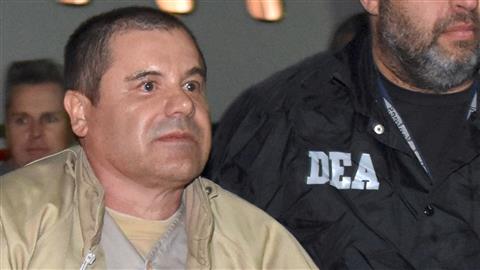
A New York City federal jury rendered a guilty verdict on all 10 federal criminal counts against notorious Mexican drug lord Joaquín “El Chapo” Guzmán, after a 3-month trial. The counts include conspiracy to launder drug money, international distribution of drugs, the use of firearms and engaging in a criminal enterprise. The 61 year old faces a mandatory life sentence without the possibility of parole for the guilty verdict of leading a continuing criminal enterprise, and a sentence of up to life imprisonment on the remaining drug counts. He will be sentenced on June 25.
Joaquin “El Chapo” Guzmán Loera once headed a criminal enterprise that spanned continents and triggered waves of bloodshed throughout his native Mexico, claiming more than 100,000 lives in drug-related violence. During the more than 200 hours of testimony at the Federal District Court in Brooklyn, 56 witnesses took to the stand with stories of murder, violence, spying, widespread corruption and even one tale of the drug lord escaping arrest in 2014 by climbing naked through a sewer alongside a former lover. The kingpin is just as notorious for leading the violent cartel as he is for his extensive measures of escaping arrest and daring prison escapes. Since Guzmán’s capture in 2016 and extradition one year later, he has been kept in solitary confinement in a maximum security prison with little to no human interaction for as many as 23 hours a day.
Over 2½ months, the partially sequestered and anonymous jury sat through testimony from 56 witnesses about unspeakable torture and ghastly murders, corruption at nearly every level of Mexico’s government, narco-mistresses, gold-plated AK-47s and monogrammed, diamond-encrusted pistols. Fourteen of those witnesses — mostly admitted drug traffickers and cartel associates — cooperated with prosecutors in hopes of reducing their own prison sentences. There were also surveillance photos, intercepted phone calls and text messages involving Guzmán, as well as evidence showing extravagant firepower and bricks of cocaine that dropped with the force of potato sacks.
The jury deliberated roughly 34 hours over six days before rendering guilty verdicts on all 10 counts. Jurors did not look at the defendant, who reportedly pocketed nearly $14 billion in cash proceeds as the decades-long head of the Sinaloa cartel. Under El Chapo, the Sinaloa cartel smuggled narcotics to wholesale distributors in Arizona, Atlanta, Chicago, Los Angeles, Miami, New York. Federal prosecutors said they will seek a forfeiture judgment for billions of dollars constituting the cartel’s illegal drug-trafficking proceeds.
One of Guzmán’s lawyers described him as “extremely upbeat” after the verdict, “He’s a fighter, he’s not done yet by far” defense attorney Michael Lambert said. After jurors left the room, Guzmán waved and smiled at his wife, Emma Coronel, a former beauty queen and courtroom regular who smiled back and touched her hand to her heart. Another member of the defense team, Jeffrey Lichtman, said they waged a vigorous defense and are disappointed in the jury’s verdict but they plan to file an appeal on a number of issues.
According to experts, his conviction will not diminish the power and reach of the Sinaloa cartel. According to researchers, the violent crime group has not been affected despite the arrests of some of the cartel’s top leaders and important associates. El Chapo created an extraodinary criminal organization that operates in more than 40 countries and was designed to carry on even in his absence. Once El Chapo started running from authorities, Ismael “El Mayo” Zambada Garcia, who lead a faction of the cartel, made sure the cartel still functioned, which he still does to this day.
Read more
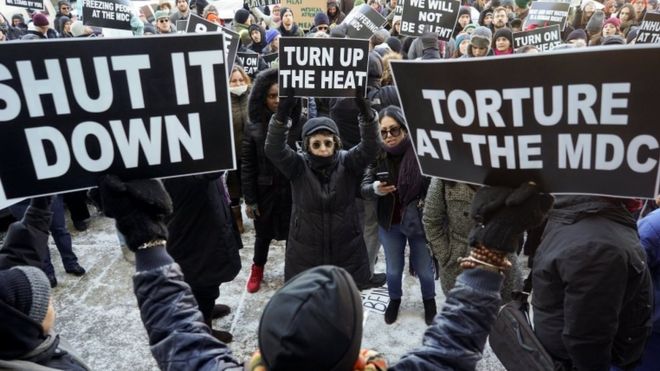
Protesters in New York City rallied throughout the weekend at the Metropolitan Detention Center in Brooklyn, where more than 1,600 prisoners were forced to endure freezing temperatures during last week’s polar vortex, with no heat, no light and no hot water. For several days, crowds gathered outside the Metropolitan Detention Center in Brooklyn to protest reports of freezing and dark conditions inside the jail after it partially lost power nearly a week ago.
Staff members and current and former prisoners at Brooklyn’s Metropolitan Detention Center testified at a hearing that the heat at the federal detention facility started to fail as early as mid-January. The hearing came following reports that quickly spread over social media that over 1,600 prisoners were being held without heat, hot meals or electricity, including during last week’s polar vortex. Many inmates had been on lockdown in cells without electricity or heat during days of bitter cold temperatures.
After the hearing, Judge Analisa Torres visited the MDC herself to inspect conditions at the jail. After more than a week without heat and power, conditions at the Metropolitan Detention Center in Brooklyn showed signs of improvement. Emergency generators were on and heat had been restored to parts of the federal jail, but public officials and lawyers who toured the facility on Sunday February 3rd, told reporters that many cells still did not have heat and some inmates were going without their medication.
Congressman Jerrold Nadler said after touring several floors on Sunday, “It is very apparent that there is a massive failure of caring here, a massive failure of proper supervision, a massive failure of planning.” Nadler said there was heat in several parts of the building, but many cells remained frigid. He said the warden told him 600 blankets from the city had been distributed. But council member Lander, who was also on the tour, said he didn’t see any blankets in any of the cells they visited. It was later revealed that the blankets were never distributed to the inmates.
Nadler said he spoke with the acting director of the Bureau of Prisons, who seemed to be acting with more urgency after the protests began. The NYCLU is calling on the Bureau of Prisons to allow family and legal visits immediately. Executive director Donna Lieberman said in a statement “The confrontation between the Bureau of Prisons and family members of inmates at MDC highlights the desperate need to address the dangerous, inhumane and unlawful conditions inside the facility,” “This has gone on for far too long.
The Department of Justice has said it would work with the Bureau of Prisons to prevent future issues. “The electrical power at the Bureau of Prisons (BOP) facility at MDC Brooklyn was restored at approximately 6:30 pm this evening. With the heat and hot water operational, and the restoration of electrical power, the facility can now begin to return to regular operations. In the coming days, the Department will work with the Bureau of Prisons to examine what happened and ensure the facility has the power, heat and backup systems in place to prevent the problem from reoccurring.”
Gov. Andrew Cuomo is also calling for a full investigation into what is happening at the facility. Cuomo wrote in a statement “I am calling on the U.S. Department of Justice to immediately investigate the circumstances at the Metropolitan Detention Center. New York State stands ready to provide any support necessary to keep the heat, hot water and electricity running at the Center and augment the investigation into those responsible for this mess.”
Read more

Police have arrested five people over the devastating dam collapse in Minas Gerais, Brazil that killed at least 65 people, with nearly 300 still missing. Three of those arrested work for Vale, the mining company that owned and operated the dam. The other two worked for a German company that carried out inspections on the dam last year. Attorney General Andre Mendonca said Vale is responsible for the disaster, the second of its kind in three years involving the mining company.
Authorities called the 2015 Mariana dam collapse the worst environmental disaster in the country’s history. That collapse killed 19 people and wreaked havoc on the environment, leading mining company Samarco — a joint venture between Vale and BHP Billiton — to reach a deal in 2016 with the Brazilian government to pay up to $6.2 billion. In a video over the weekend, Vale chief Fabio Schvartsman called the Brumadinho dam break “inexcusable” and asked the Brazilian public for forgiveness. He said the company will aid victims and noted that Vale put “immense effort” into improving its dams after the disaster in Mariana.
Soon after the most recent collapse, the state judiciary froze more than $260 million from Vale, with a presiding judge citing the company’s responsibility for the disaster. The money will be deposited into a judicial account to compensate for any costs to the state as a result of rescue operations or victim support. Minas Gerais state has fined Vale $99 million for damage caused by the dam break and said the money will be used for repairs.
The Civil Defense of Minas Gerais said 291 people were still missing and 192 people have been rescued from the area. Authorities say 427 people were in the Córrego do Feijão mine in the southeastern state of Minas Gerais when the dam burst. Hundreds of people are still missing and the collapse buried most of the mining town-Brumadinho. The disaster shed light on potential risks at nearly 700 other mining dams in the state of Minas Gerais and drew attention to what some described as a lack of appropriate regulation.
The collapse unleashed a muddy sea of mining debris into the region and the extent of the damage is still being calculated. Authorities temporarily halted search and rescue and placed 3,000 people under evacuation orders amid fears that another dam nearby was about to rupture. The orders were lifted after authorities determined dam VI was no longer at risk of bursting. In an effort to find missing people, the Federal Attorney General’s Office obtained an injunction in the Federal Court of Minas Gerais ruling that mobile carriers should provide data from the cell phone signals of people who were in the region where the dam broke.
Officials say they expect to contain the sludgy mine waste known as tailings within two days. The Brazilian National Water Agency said they are monitoring the tailings and coordinating plans for supplying water to the affected region. Officials said during a press conference that the priority now is assisting victims and their families. After that, officials said they’d focus on environmental damage and the mining process.
Several videos circulating of the disaster show the devastation of the dam collapse. One video shows the exact moment the dam collapsed, sending a sea of mud and debris swallowing up the area as unsuspecting cars are scene, likely for the last time. Videos of the rescue efforts show helicopters hovering feet above the ground as firefighters’ pluck people from the muck.
Read more
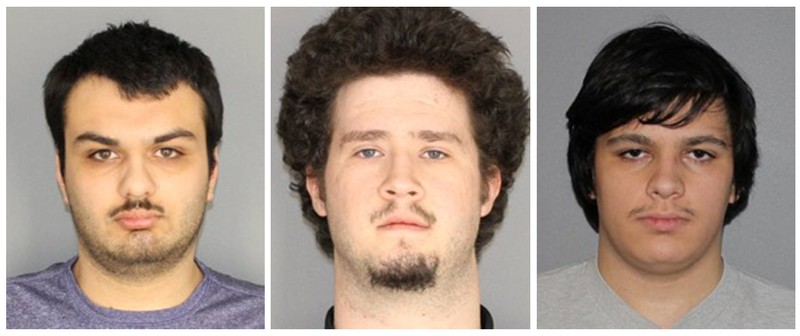
Three men and a teen were arrested for allegedly plotting to attack Islamberg, a small predominantly Muslim community near Binghamton, New York. Brian Colaneri, 20, Vincent Vetromile, 19, Andrew Crysel, 18, were arrested along with a 16-year-old in connection to the alleged plot. The suspects were said to be in possession of multiple improvised explosive devices and firearms, and were charged with criminal possession of a weapon and conspiracy.
Police uncovered the plot when the 16-year-old boy was reported to police in Greece, New York, for making a lunchroom comment. He allegedly showed another student a photo of a schoolmate who, he told others, looked “like the next school shooter.” While interviewing the boy about the comment he made investigators were told that he was allegedly working with three men to attack Islamberg. Greece Police Chief Patrick D. Phelan said “The initial investigation was about the comment made by the student and then our investigation took us to this plot that we had no idea about. I don’t know that there was a specific date. They had a plan in place,” Phelan said.
Phelan told reporters that three improvised explosive devices in the shape of mason jars wrapped in duct tape were found at the home of the juvenile. “They were homemade bombs with various items – black powder, BBs, nails, inside a container,” Phelan said. The bombs are currently being examined by the FBI to see if they would have been capable of detonating. Police searched five locations and seized 23 weapons and numerous electronic devices, including phones and computers. Some of the guns were owned by the suspects and others were owned by family members but the suspects had access to them.
Colaneri, Vetromile and Crysel are each charged with three counts of criminal possession of a weapon in the first degree and one count of conspiracy in the fourth degree. Information about the 16 year old was not released by police due to his age. Phelan credited the students who reported the lunchroom comment with saving lives. “If they had carried out this plot, which every indication is that they were going to, people would have died,” the chief said. “I don’t know how many and who, but people would have died.”
Islamberg is a rural community in Delaware County that is operated by The Muslims of America, an indigenous American Muslim organization based in the U.S. It was settled by followers of Pakistani cleric Sheikh Mubarik Gilani in the 1970s to escape crime and crowding in New York City. It’s a gated community with dirt roads and several dozen small homes in New York’s Catskills Mountains. There are 200 or so members of the community, where children are home-schooled and residents worship at a mosque built on the 70-acre property. Police and analysts have dismissed accusations that the community is a terrorist training ground, but the claims have persisted for decades.
This is not the first time Islamberg has been the target of an alleged hate crime plot. In 2017, a Tennessee man was convicted on federal charges for what authorities called plans to burn down Islamberg’s mosque in 2015. Robert Doggart, now 67, is serving a 20 year sentence in federal prison. Doggart was arrested by Federal Bureau of Investigation agents in April 2015 after saying in wiretapped telephone calls that he planned to recruit a militia and travel to Islamberg for an attack. While there, he intended to “carry out an armed attack” that included burning down a mosque or “blowing it up with a Molotov cocktail or other explosive device.” The wiretaps also recorded him saying “I don’t want to have to kill children, but there’s always collateral damage.”
Read more














